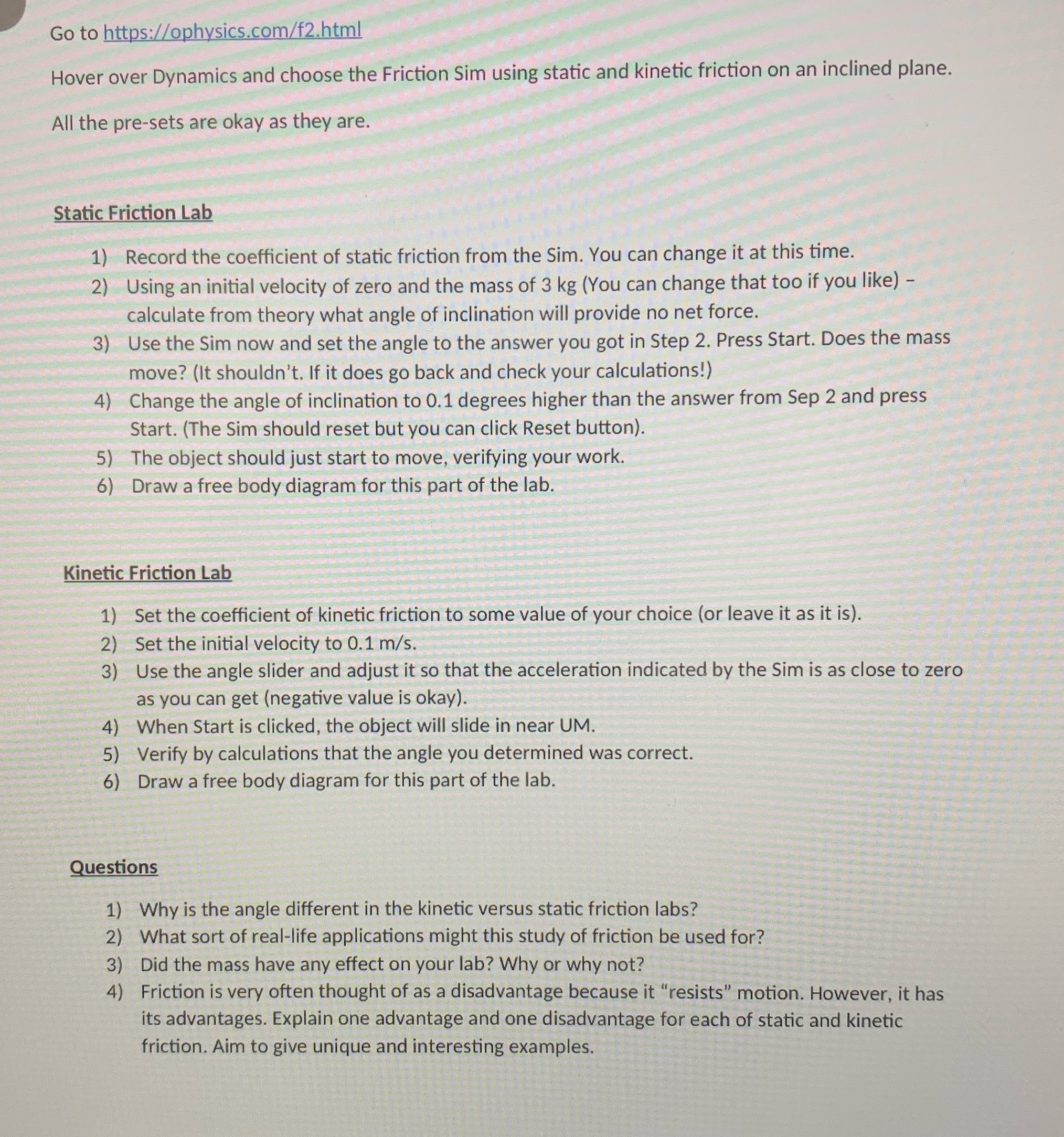Answered step by step
Verified Expert Solution
Question
1 Approved Answer
Go to the link to be able to answer: https://ophysics.com/f2.html Go to https://ophysics.com/f2.html Hover over Dynamics and choose the Friction Sim using static and kinetic
Go to the link to be able to answer: https://ophysics.com/f2.html

Step by Step Solution
There are 3 Steps involved in it
Step: 1

Get Instant Access to Expert-Tailored Solutions
See step-by-step solutions with expert insights and AI powered tools for academic success
Step: 2

Step: 3

Ace Your Homework with AI
Get the answers you need in no time with our AI-driven, step-by-step assistance
Get Started


